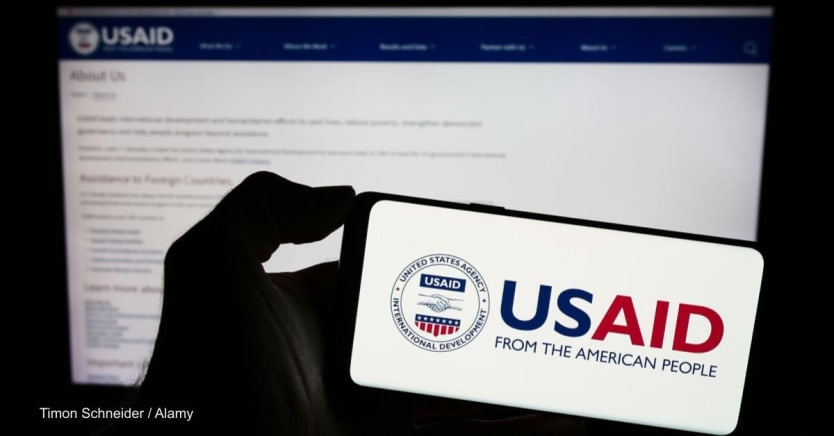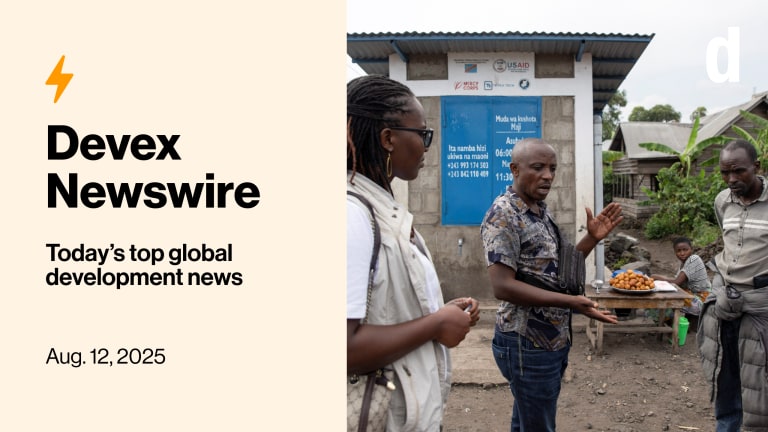
In perhaps the next big move for localization, the U.S. Agency for International Development is analyzing whether its internal policies — which shape its multibillion-dollar programs — are truly taking local organizations into account. And so far, the answer to that question seems to be: not quite. Or at least, not yet, according to a new report released by Save the Children.
“There is really no significant, robust guidance or procedures for local actors to provide input into USAID’s development policies,” said Jenny Russell, Save the Children’s senior director of global development policy and advocacy. “In order for these policies to really reflect and be responsive to local actors, their knowledge and their experiences, [the policymaking process] needs to be much more diverse and much more inclusive.”
Russell is referring to the broad, overarching strategies USAID uses to guide its programming, from those targeting climate change to those strengthening health systems to those promoting economic growth. These strategies define problems, identify solutions, and set targets, often guiding USAID’s programming for years at a time.
Because of these strategies’ influence, Russell said, getting local organizations’ input is a vital part of the policymaking process. But despite that, USAID’s standard procedures only require one public consultation, Save the Children found, and it’s up to individual bureaus to pull local organizations’ voices into the fold.
“That’s just as significant in many ways as their voice in a project,” Russell told Devex. “It’s even more of an upstream approach — that their voice is considered before you even get to the programs that seek to address that issue.”
Moses Isooba, the executive director of the Uganda National NGO Forum, said he only submitted comments on a recent USAID policy draft because he happened to stumble across the webpage.
“I can almost bet, without batting an eyelid, that there were likely no organizations in Uganda who made a contribution [to that strategy],” Isooba told Devex. “And even if you do give feedback, there is no acknowledgment that you’ve done so. It just feels like your comment simply disappears into the abyss.”
Much of that, Save the Children found, was due to confusion around ADS Chapter 200, the operational standards that USAID follows to create its policies. With minimal requirements and resources noted in ADS Chapter 200, the report stated there was “no clear consensus” about whether all policies should include local consultations, and how to conduct such forums if they do occur.
The report also mentioned institutional barriers, such as budgetary and human resource constraints, and limited comprehensive consultation. That comes on top of a disconnect between the overall agency approach to consultations versus the operations of missions on the ground. Some local partners, the report found, said there was no “real appetite at USAID for disrupting the status quo to enable local leadership,” with missions often treating local consultations like a “tick the box” exercise.
“As a result of these barriers, there is limited awareness among local and national actors about USAID policies,” the report continued. Many survey respondents “were not aware that policies were available for feedback and those that were aware had learned through international NGOs or social media.”
Ajay Das, a Nepal-based program director at The Asia Foundation, agreed. He felt there was limited awareness among both the foundation and other local partners about USAID policies, and the fact that organizations could contribute to their drafting.
Despite that, things do seem to be changing. USAID’s Local Capacity Strengthening Policy — which guides how the agency should invest in local partners’ capacity — was published after a three-year-long process, one that included 11 focus groups, a public comment period that gathered 600 pages of feedback, and a lengthy analysis period.
Thoughtful outreach, sufficient time for feedback, the translation of materials into local languages, and the closure of feedback loops, the Save the Children report said, contributed to the policy’s unique success in engaging local voices.
“While USAID staff stressed that the Local Capacity Strengthening Policy benefited from an atypical combination of resources, capacity, leadership buy-in, and a commitment to quality over deadlines, recognizing these effective strategies nevertheless provides a roadmap for refining and enhancing future consultations,” the report stated.
Today, USAID’s Bureau for Planning, Learning and Resource Management — a new team launched by Administrator Samantha Power just a few months back — is working to strengthen its outreach to local organizations, Russell said, incorporating many of the recommendations from Save the Children’s report inside of its revision of ADS Chapter 200.
Some of those recommendations included expanding USAID’s policy guidance to provide clear, minimum standards for local consultations, from translating draft policy materials into other languages to extending a public comment period to at least 20 business days.
The organization also recommended USAID create step-by-step guidance for USAID staff to engage with local partners, and encouraged USAID missions to regularly share draft policy documents with their local ecosystem for review and input. It also suggested creating a “policy forecast” — a quarterly forum for the agency to share its policy work with its local partners — among other longer-term recommendations.
The agency has also revised its risk appetite statement, a USAID spokesperson said, and updated a new strategy to outline the tools and cultural shifts needed to work more closely with local organizations. And, it has continued to invest in the WorkWithUSAID.org platform, a website built to help a more diverse array of entities work with the agency.
To date, more than 6,300 partners are registered on that platform, the spokesperson said, 67% of which are local.
“I think USAID needs to be truly wedded to the subsidiarity principle that those closest to the problem may actually have the answer,” Isooba said. “They may not be articulate in English. They may not speak in development jargon. They may not speak in USAID acronyms. But for heaven’s sake, it’s important to try to pick their minds.”
Dig into Roots for Change, a series examining the push toward locally led development.
This is an editorially independent piece produced as part of our Roots for Change series. Click here to learn more.









